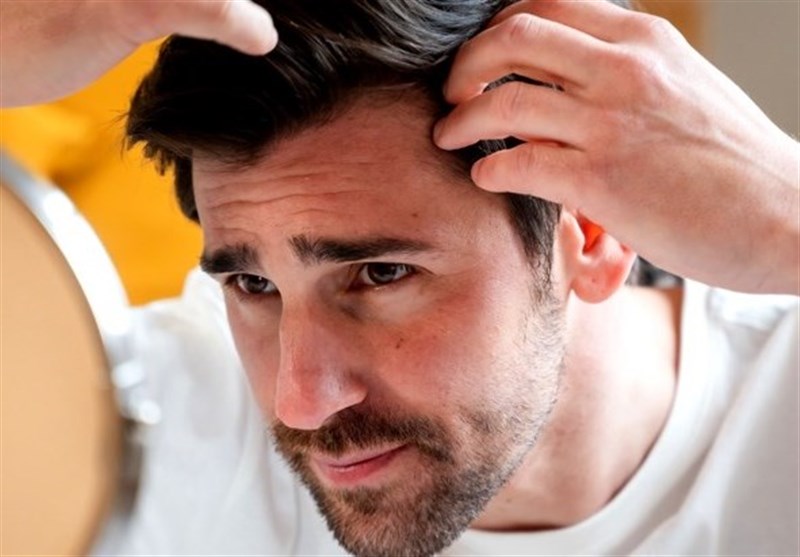New Evidence Suggests Stress Can Speed Up Hair Graying
TEHRAN (Tasnim) – Studies reveal that stress-induced oxidative damage to hair follicles accelerates the onset of gray hair, adding to the genetic causes of graying.
The onset of gray hair is primarily influenced by genetics, but stress, environmental factors, and certain lifestyle habits may accelerate the process, according to recent studies.
The timing of when an individual begins to go gray largely depends on their genetic makeup, with the first strands typically appearing between the twenties and fifties. Men generally notice gray hairs initially at the temples and sideburns, while women tend to see them at the hairline, particularly in the front.
The most rapid onset of graying typically occurs between the ages of 50 and 60. However, researchers are exploring whether lifestyle factors, including stress, may hasten the process or if certain practices can delay it.
Contrary to popular belief, plucking gray hairs, dyeing hair, and stress alone do not universally lead to more graying. While redheads may go gray differently, they too are not exempt from the phenomenon. Here's what science reveals about graying and the role stress plays.
Hair color originates from melanin, produced by specialized cells known as melanocytes located within hair follicles. Two main types of melanin—eumelanin and pheomelanin—determine hair color. Black and brown hair possess more eumelanin, while red hair contains higher levels of pheomelanin. As people age, melanocytes produce less melanin, leading to a loss of pigment that causes hair to turn gray or white.
While genetics are a significant factor, stress can also accelerate graying. This happens when oxidative stress, caused by an imbalance between harmful free radicals and protective antioxidants, damages hair follicles and stem cells responsible for melanin production. Psychological stress, autoimmune diseases, and environmental factors like UV exposure and pollution contribute to this imbalance.
Scientists have linked stressful life events to depigmented hair sections in some cases, though the hair can regain color once the stress subsides. In younger individuals, whose melanocytes are still functioning, hair may return to its natural color after a stressful period ends.
Despite popular myths, plucking a gray hair does not cause more to grow back in its place. However, excessive plucking can damage the hair follicle, possibly leading to earlier graying if melanin production is affected.
Similarly, dyeing hair doesn’t necessarily lead to faster graying unless permanent dyes are used. These products can accumulate chemicals like hydrogen peroxide in the hair follicle, potentially damaging melanocytes and accelerating the graying process.
Redheads also experience graying, but the process is different. Red hair fades into strawberry blonde or silvery-white rather than turning gray. This difference is attributed to the chemical structure of pheomelanin, the pigment that colors red hair, which is less prone to oxidative damage than eumelanin found in darker hair.
While genetics play a dominant role in when graying begins, individuals may reduce premature graying by adopting healthy habits. Avoiding stress, smoking, excessive alcohol consumption, and limiting UV exposure can potentially delay the process. A healthy diet rich in vitamin B12, copper, iron, calcium, and zinc may also support melanin production and hair pigmentation.
As scientists continue to study the relationship between stress and graying, the connection between overall health and hair color remains evident.






